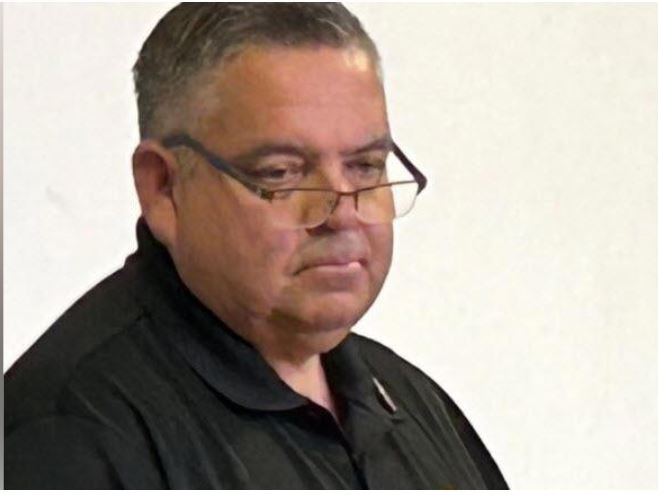Police swap seized guns for new ones
Springfield News-Sun, springfieldnewssun.com
BYLINE: Andrew McGinn, Staff Writer,
Link to Article
Springfield & Clark County, OH
A ‘right decision based on the economy.’ Other departments say confiscated weapons should be destroyed.
SPRINGFIELD — In September, the Springfield Police Division acquired 17 brand new M-4 rifles worth $14,229. Now, it is looking to add $15,000 worth of new shotguns.
The division, however, isn’t using taxpayer money to acquire the firearms — it’s acquiring all that new equipment by trading other people’s guns, each confiscated during a crime.
For Springfield’s police division, it’s a new way of dealing with the hundreds of seized firearms in its possession.
“It’s turning a negative into a positive,” said Lt. Brad Moos, who organizes trades for the division.
Confiscated firearms used to sit in limbo in the SPD property room. Now they’re being swapped with federal firearms dealers to keep the division’s firepower up to par in lean economic times.
“This was a hard decision, but the right decision based on the economy and the times,” said Police Chief Stephen Moody.
However, Clark County Sheriff Gene A. Kelly, whose office has its own property room, isn’t about to follow suit.
His department takes its confiscated guns to an undisclosed facility, where they’re melted down free of charge. The sheriff’s office doesn’t receive anything in return, he said.
“We’re going to get these guns off the street,” Kelly said.
Unless a confiscated gun can be converted to a service weapon — primarily done with shotguns — it will be destroyed, he said.
The sheriff nodded in agreement when his property room clerk, Walter “Dutch” Silz, added, “I don’t want any officer to face the same gun twice.”
Moody, who’s been police chief since 2003, admittedly thought long and hard about the same issue.
“There’s a lot of morality in this choice,” he said.
Only sporting firearms — shotguns, rifles and handguns — used in misdemeanors or found by strangers and turned in are being traded, he said.
The likes of the TEC-9, an infamous semiautomatic pistol, get destroyed.
Guns also must have a visible serial number.
“Something that’s used to hurt someone, chances are, 98 percent of the time, that gun is going to the furnace,” Moody said. “As a law enforcement officer, I don’t want that gun back on the street. That’s an affront to the victim.”
Moody also made the determination that guns used in homicides and suicides would be kept in storage indefinitely.
“Families always have questions,” he said.
Besides the economy, the division began trading confiscated guns, in part, simply to alleviate space issues, according to police Sgt. Barry Eggers, who took over the property room in March 2011.
“When I came down here,” Eggers said, “we had 2,000 guns that go back decades.”
“We had shotguns just lying all over the place,” he added.
By comparison, the sheriff’s office tries to rid itself of confiscated guns almost as soon as the court clears the weapon.
It destroyed no guns last year, Kelly said, but sent about 100 to be melted down in both 2009 and 2010 — including a fully loaded AK-47 found by kids as they got off a school bus on Plattsburg Road.
“Most of the guns in here were not used to hunt sparrows or deer,” Silz said. “They were used to intimidate somebody.”
Trading confiscated guns for new firearms isn’t new in Champaign County. The sheriff’s office there has been swapping seized guns — everything that’s operable, said Sheriff Matt Melvin — for close to 20 years.
“It helps offset our costs,” Melvin said.
The Springfield Police Division’s first trade, in September, was made up of 160 guns for the semiautomatic M-4s, Moos said.
The guns went to Pennsylvania-based Phoenix Law Enforcement Distributors, which specializes in trading confiscated guns with police departments, according to its website.
The second, in February, consisted of 65 firearms in exchange for $3,720 worth of magazines and cases for its new M-4s. Those guns went to Vance’s Law Enforcement in Columbus.
Moos is putting together what will be the third and biggest trade yet — so far, it’s up to more than 350 confiscated guns valued at about $50,000. That will more than cover the 30 to 40 12-gauge shotguns the division wants.
Moody credits his department for coming up with a way to serve effectively while understanding economic realities.
“I thought it was something we needed to try,” he said.
And, if history proves anything, there will be no shortage of guns to trade.
“We get firearms nearly every day,” Eggers said.
- - - - - - - - - - - - - - - - - - - - - - - - - - - - - - -
International Association for Property and Evidence
"Law Enforcement Serving the Needs of Law Enforcement"
www.IAPE.org
BYLINE: Andrew McGinn, Staff Writer,
Link to Article
Springfield & Clark County, OH
A ‘right decision based on the economy.’ Other departments say confiscated weapons should be destroyed.
SPRINGFIELD — In September, the Springfield Police Division acquired 17 brand new M-4 rifles worth $14,229. Now, it is looking to add $15,000 worth of new shotguns.
The division, however, isn’t using taxpayer money to acquire the firearms — it’s acquiring all that new equipment by trading other people’s guns, each confiscated during a crime.
For Springfield’s police division, it’s a new way of dealing with the hundreds of seized firearms in its possession.
“It’s turning a negative into a positive,” said Lt. Brad Moos, who organizes trades for the division.
Confiscated firearms used to sit in limbo in the SPD property room. Now they’re being swapped with federal firearms dealers to keep the division’s firepower up to par in lean economic times.
“This was a hard decision, but the right decision based on the economy and the times,” said Police Chief Stephen Moody.
However, Clark County Sheriff Gene A. Kelly, whose office has its own property room, isn’t about to follow suit.
His department takes its confiscated guns to an undisclosed facility, where they’re melted down free of charge. The sheriff’s office doesn’t receive anything in return, he said.
“We’re going to get these guns off the street,” Kelly said.
Unless a confiscated gun can be converted to a service weapon — primarily done with shotguns — it will be destroyed, he said.
The sheriff nodded in agreement when his property room clerk, Walter “Dutch” Silz, added, “I don’t want any officer to face the same gun twice.”
Moody, who’s been police chief since 2003, admittedly thought long and hard about the same issue.
“There’s a lot of morality in this choice,” he said.
Only sporting firearms — shotguns, rifles and handguns — used in misdemeanors or found by strangers and turned in are being traded, he said.
The likes of the TEC-9, an infamous semiautomatic pistol, get destroyed.
Guns also must have a visible serial number.
“Something that’s used to hurt someone, chances are, 98 percent of the time, that gun is going to the furnace,” Moody said. “As a law enforcement officer, I don’t want that gun back on the street. That’s an affront to the victim.”
Moody also made the determination that guns used in homicides and suicides would be kept in storage indefinitely.
“Families always have questions,” he said.
Besides the economy, the division began trading confiscated guns, in part, simply to alleviate space issues, according to police Sgt. Barry Eggers, who took over the property room in March 2011.
“When I came down here,” Eggers said, “we had 2,000 guns that go back decades.”
“We had shotguns just lying all over the place,” he added.
By comparison, the sheriff’s office tries to rid itself of confiscated guns almost as soon as the court clears the weapon.
It destroyed no guns last year, Kelly said, but sent about 100 to be melted down in both 2009 and 2010 — including a fully loaded AK-47 found by kids as they got off a school bus on Plattsburg Road.
“Most of the guns in here were not used to hunt sparrows or deer,” Silz said. “They were used to intimidate somebody.”
Trading confiscated guns for new firearms isn’t new in Champaign County. The sheriff’s office there has been swapping seized guns — everything that’s operable, said Sheriff Matt Melvin — for close to 20 years.
“It helps offset our costs,” Melvin said.
The Springfield Police Division’s first trade, in September, was made up of 160 guns for the semiautomatic M-4s, Moos said.
The guns went to Pennsylvania-based Phoenix Law Enforcement Distributors, which specializes in trading confiscated guns with police departments, according to its website.
The second, in February, consisted of 65 firearms in exchange for $3,720 worth of magazines and cases for its new M-4s. Those guns went to Vance’s Law Enforcement in Columbus.
Moos is putting together what will be the third and biggest trade yet — so far, it’s up to more than 350 confiscated guns valued at about $50,000. That will more than cover the 30 to 40 12-gauge shotguns the division wants.
Moody credits his department for coming up with a way to serve effectively while understanding economic realities.
“I thought it was something we needed to try,” he said.
And, if history proves anything, there will be no shortage of guns to trade.
“We get firearms nearly every day,” Eggers said.
- - - - - - - - - - - - - - - - - - - - - - - - - - - - - - -
International Association for Property and Evidence
"Law Enforcement Serving the Needs of Law Enforcement"
www.IAPE.org


